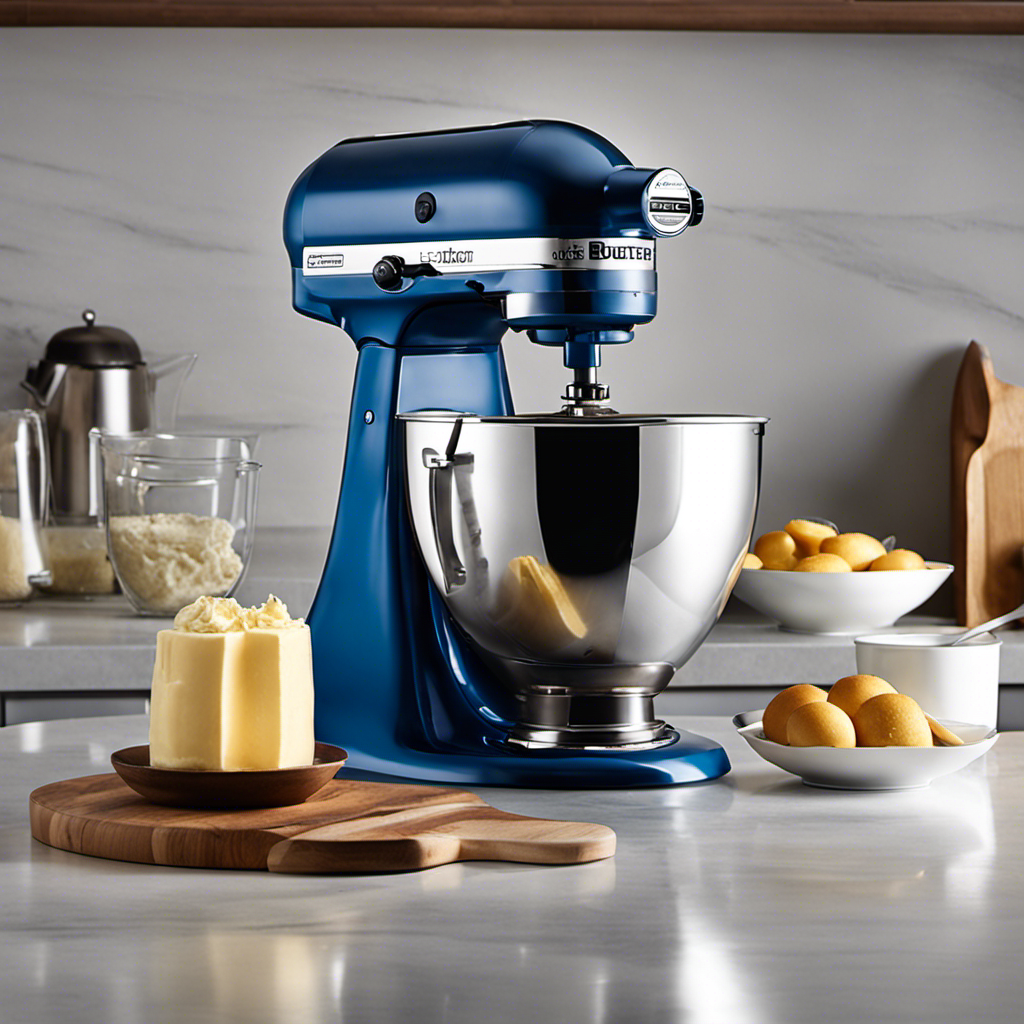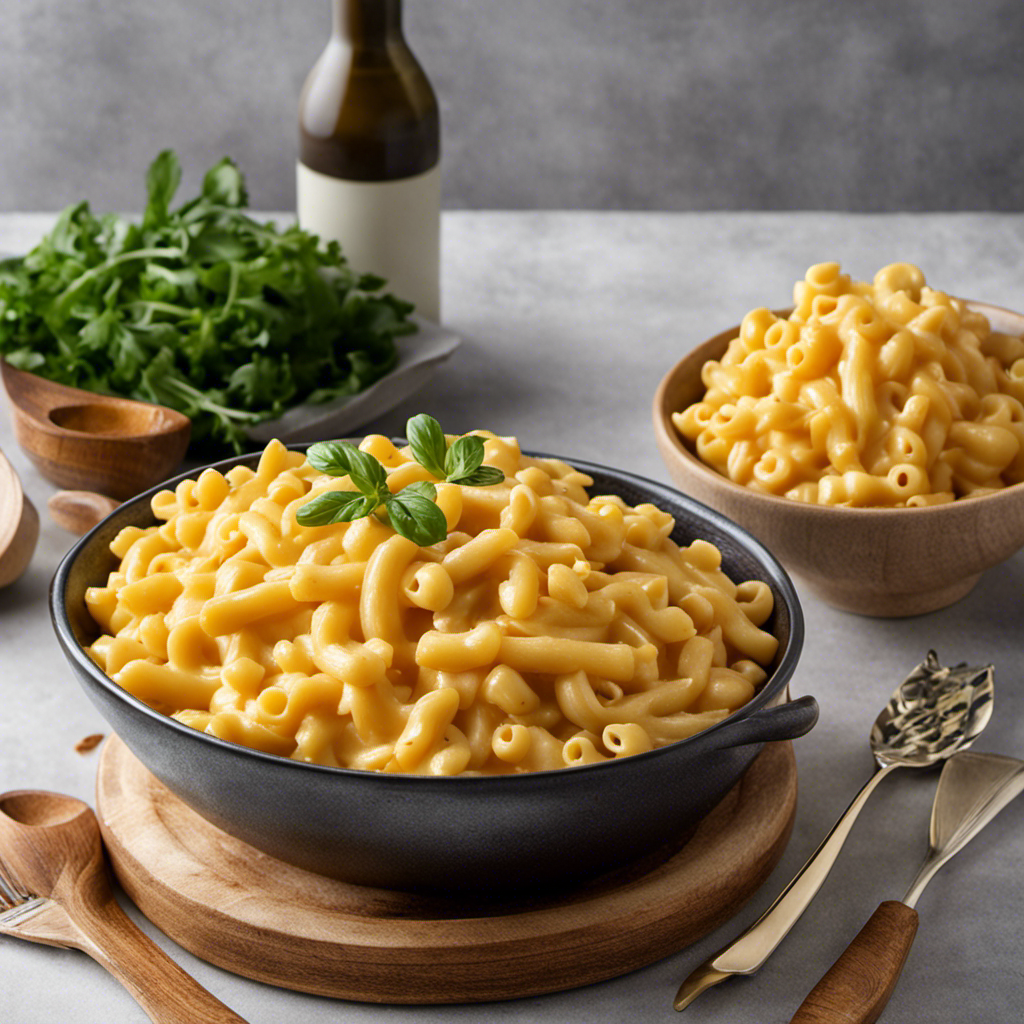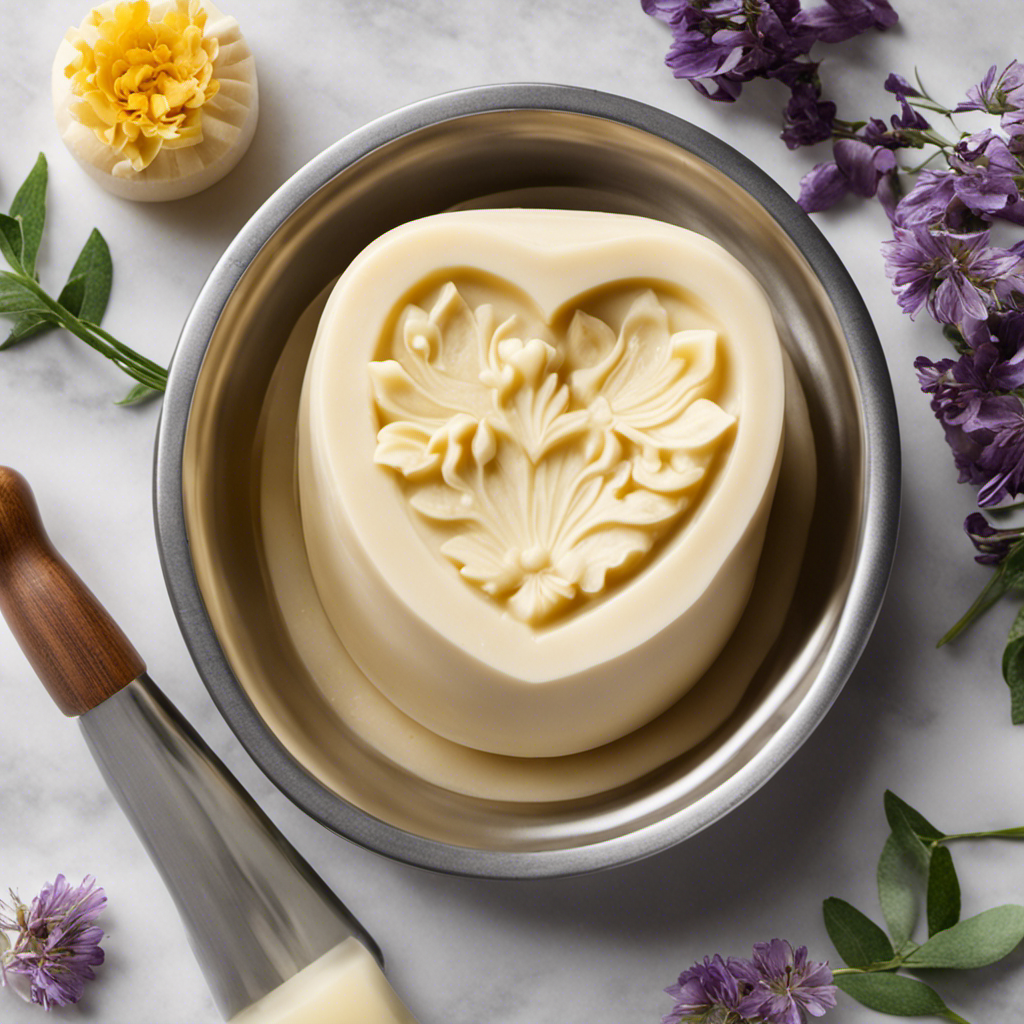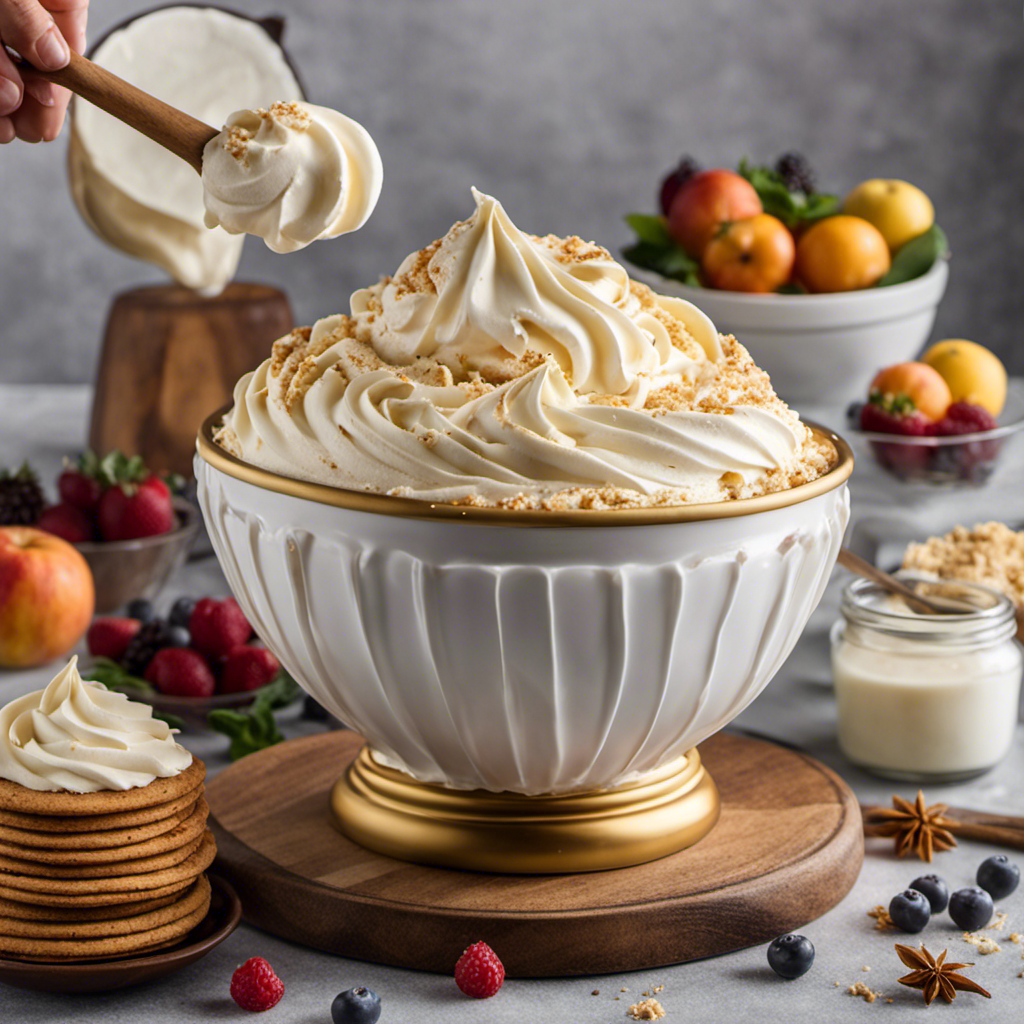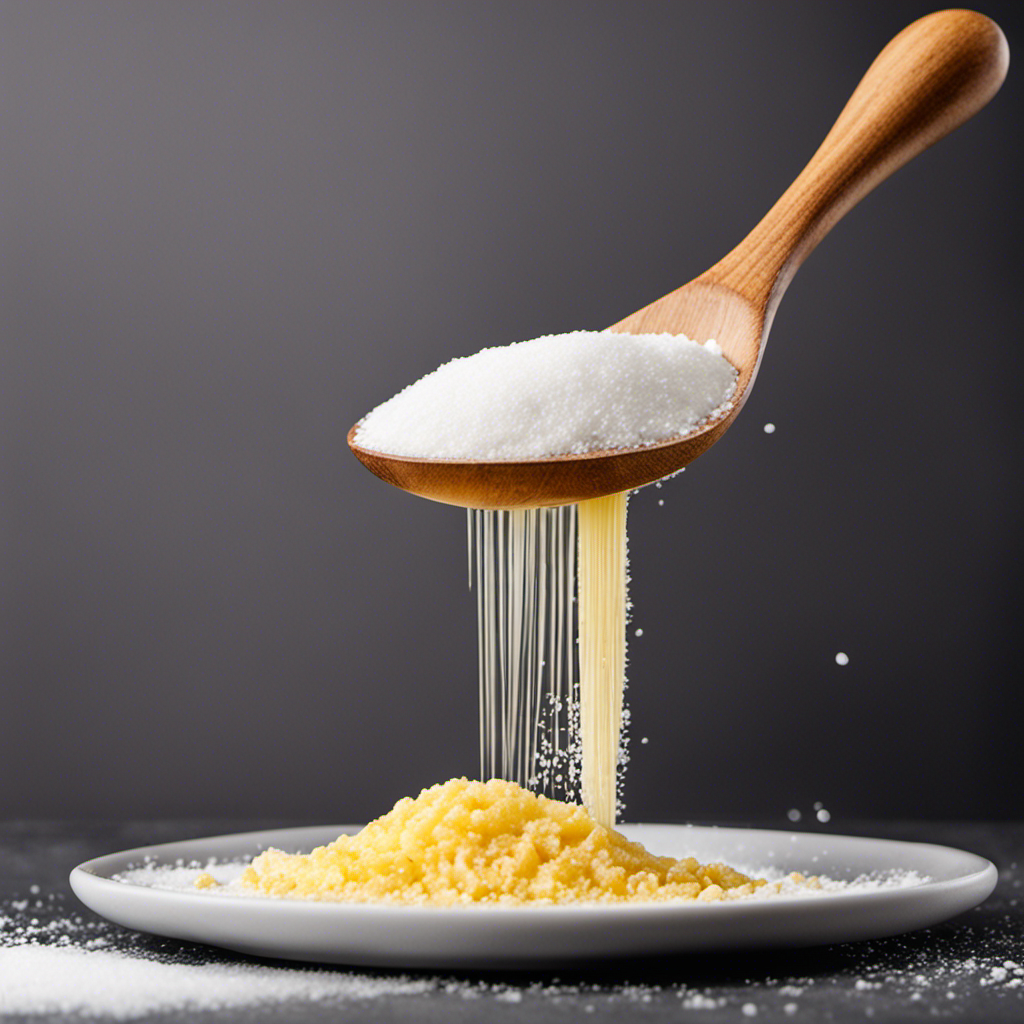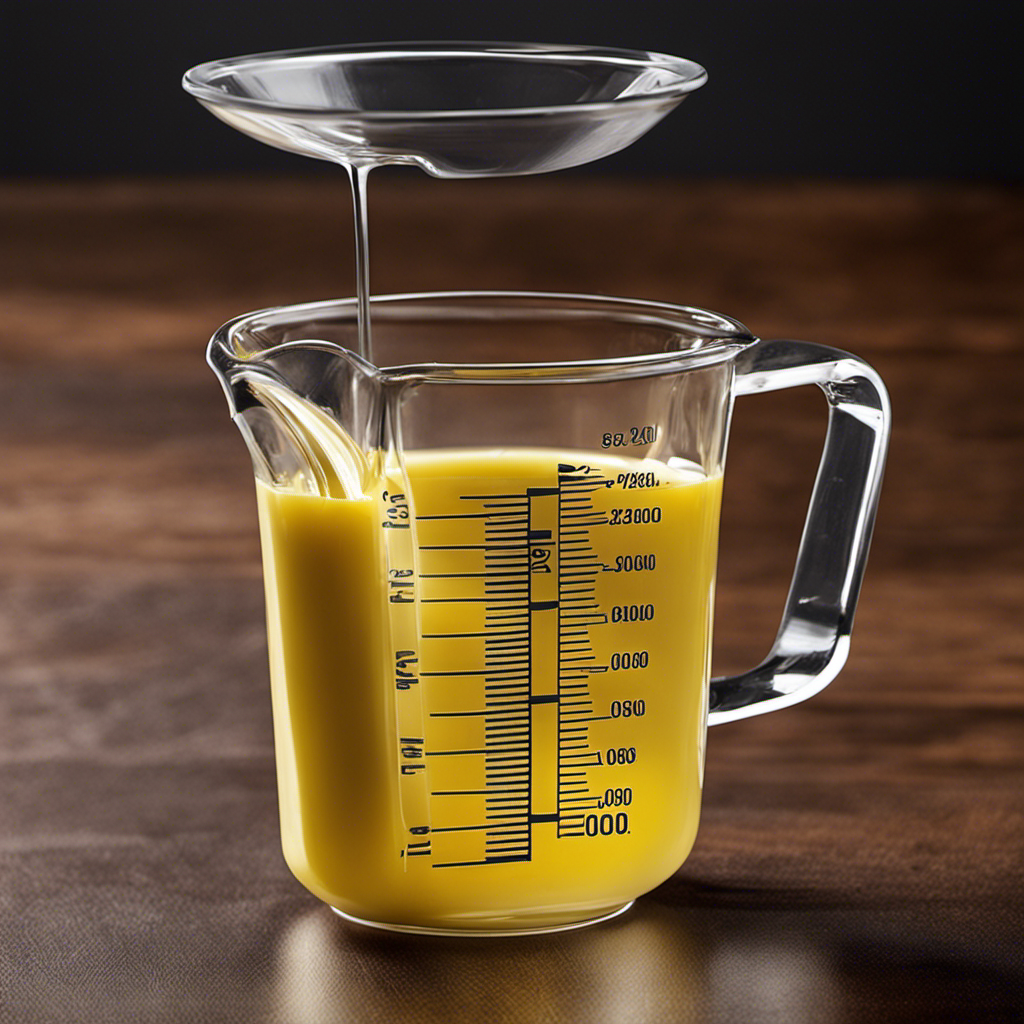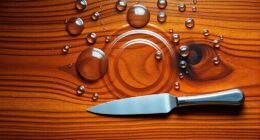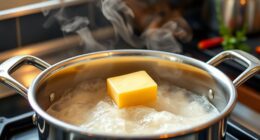I have always been curious about which attachment works best for creaming butter and sugar. Are you aware that using the incorrect attachment can impact the texture and final result of your baked goods?
In this article, we’ll explore the different attachments available and weigh their pros and cons. By the end, you’ll have a clear understanding of which attachment to use for perfect creamed butter and sugar.
So let’s dive in and discover the secret to achieving the ultimate fluffy and light mixture!
Key Takeaways
- The right attachment is crucial for creaming butter and sugar in order to achieve the desired texture and outcome of baked goods.
- The paddle attachment is ideal for creaming as it thoroughly mixes the ingredients and ensures an even combination.
- The whisk attachment is not suitable for creaming as it incorporates too much air, resulting in a lighter texture.
- The beater attachment is versatile and can mix ingredients quickly and thoroughly, making it a good option for creaming as well.
The Importance of Choosing the Right Attachment
When creaming butter and sugar, it’s important for you to choose the right attachment for your mixer.
The attachment options available for creaming are the paddle attachment and the whisk attachment.
The paddle attachment is ideal for creaming butter and sugar because it helps achieve a perfect mixture. Its flat shape allows it to thoroughly mix the ingredients, ensuring that the butter and sugar are evenly combined.
On the other hand, the whisk attachment is not suitable for creaming as it incorporates too much air into the mixture, resulting in a lighter texture and potentially affecting the final outcome of your recipe.
Therefore, to ensure the best results when creaming butter and sugar, always opt for the paddle attachment on your mixer.
Understanding the Different Attachments Available
To understand the different options available, you’ll want to consider the specific attachments for combining those two ingredients.
When it comes to creaming butter and sugar, there are a few attachment options that can make the process easier and more efficient.
The most common attachment for creaming is the paddle attachment. This attachment has a flat, paddle-like shape that helps break down the butter and sugar, creating a creamy and fluffy texture.
Another option is the whisk attachment, which is great for incorporating air into the mixture, resulting in a lighter and fluffier end product.
Lastly, some stand mixers come with a dough hook attachment, which can be used for creaming butter and sugar, although it may not be as effective as the paddle or whisk attachments.
The Whisk Attachment: Pros and Cons
Consider using the whisk attachment for creaming butter and sugar, as it can incorporate air into the mixture, resulting in a lighter and fluffier end product. Here are three reasons why the whisk attachment is a versatile tool for this task:
-
Efficient Mixing: The whisk attachment’s design allows it to quickly and evenly blend the butter and sugar together, creating a smooth and creamy consistency.
-
Incorporates Air: The balloon-like shape of the whisk attachment helps to incorporate air into the mixture, which leads to a lighter and fluffier texture in your baked goods.
-
Versatile Use: The whisk attachment is not only great for creaming butter and sugar, but it can also be used for whipping cream, beating eggs, and incorporating air into other mixtures.
Compared to the paddle attachment, the whisk attachment excels at incorporating air and creating a lighter texture. However, it is important to note that the paddle attachment may be more suitable for heavier mixtures or when a denser texture is desired.
The Paddle Attachment: Pros and Cons
The paddle attachment is versatile and can be used for mixing heavier mixtures or when a denser texture is desired.
When it comes to creaming butter and sugar, the paddle attachment is a great tool to have in your kitchen arsenal. It has a flat, paddle-like shape that helps to incorporate the butter and sugar together, creating a smooth and creamy mixture.
The paddle attachment is perfect for creaming because it gently combines the ingredients without incorporating too much air, which can result in a lighter texture. This technique is commonly used in baking recipes, especially for making cookies, cakes, and other baked goods.
The paddle attachment is easy to use and provides consistent results, making it a valuable tool for any home baker.
The Beater Attachment: Pros and Cons
When it comes to the beater attachment, there are several key points to consider: speed and efficiency, texture and consistency, and cleaning and maintenance.
In terms of speed and efficiency, the beater attachment is known for its ability to mix ingredients quickly and thoroughly. It can handle larger quantities of batter or dough with ease, making it a time-saving option in the kitchen.
Additionally, the beater attachment is great for achieving a smooth and consistent texture in your baked goods. It effectively incorporates all the ingredients together, resulting in a well-blended batter or dough.
Lastly, cleaning and maintaining the beater attachment is relatively simple. Most models are dishwasher safe or can be easily cleaned by hand with warm soapy water. Regular maintenance, such as checking for any wear and tear, is also important to ensure the attachment’s longevity.
Speed and Efficiency
Creaming butter and sugar on a high-speed mixer is more efficient. Here’s why:
-
Faster mixing: With a high-speed mixer, the butter and sugar can be creamed together in less time, saving you precious minutes in the kitchen.
-
Improved texture: The high-speed mixing action creates a lighter and fluffier texture, resulting in a better end product.
-
Enhanced incorporation: The increased speed helps the butter and sugar blend together more thoroughly, ensuring even distribution and better flavor.
When it comes to speed versus quality, it’s important to find a balance. While a high-speed mixer can offer efficiency, it’s essential to keep an eye on the following common issues:
-
Overmixing: Be careful not to overmix the butter and sugar, as this can lead to a dense and tough texture.
-
Temperature control: Ensure the butter is at the right temperature before creaming. Too soft or too cold butter can affect the creaming process.
-
Ingredient ratios: Follow the recipe’s recommended ratios of butter to sugar for the best results.
Texture and Consistency
Now that we’ve covered the importance of speed and efficiency when creaming butter and sugar, let’s focus on achieving the desired texture and consistency. When it comes to achieving a smooth texture, the paddle attachment is your best choice. Its flat design helps to incorporate the butter and sugar evenly, resulting in a creamy and uniform mixture. On the other hand, if you’re aiming for a fluffy consistency, the whisk attachment is the way to go. Its wire design incorporates air into the mixture, creating light and airy results. To summarize, here’s a table comparing the two attachments and their effects on texture and consistency:
| Attachment | Texture | Consistency |
|---|---|---|
| Paddle | Smooth | Creamy |
| Whisk | Fluffy | Airy |
Cleaning and Maintenance
To keep your equipment in good condition, it’s important to clean and maintain it regularly. Here are some cleaning tips and maintenance tricks that will help you keep your equipment running smoothly:
-
Clean after every use: Wipe down the attachments with a damp cloth or sponge to remove any residue or food particles.
-
Use warm soapy water: For a deeper clean, detach the attachments and soak them in warm soapy water. Gently scrub with a brush and rinse thoroughly before drying.
-
Check for wear and tear: Regularly inspect your equipment for any signs of wear or damage. Replace any worn or broken parts to prevent further damage and ensure optimal performance.
Which Attachment Is Best for Creaming Butter and Sugar
When making cookies, you’ll want to use the paddle attachment for creaming butter and sugar. The paddle attachment is the best mixer for this task because it allows you to achieve the perfect creamy texture that is essential for creating light and fluffy baked goods. Here is a comparison of the different attachments commonly used for creaming butter and sugar:
| Attachment | Description | Best For |
|---|---|---|
| Paddle | Flat, paddle-shaped attachment with flexible edges | Creaming butter and sugar, mixing cookie dough |
| Whisk | Wire whisk attachment with multiple loops | Whipping cream, mixing meringue |
| Beater | Solid, sturdy attachment with thin blades | Beating eggs, mixing cake batters |
Tips for Achieving the Perfect Creamed Butter and Sugar Mixture
For achieving the perfect creamed butter and sugar mixture, it’s important to make sure your butter is at room temperature. This allows the butter to soften and mix evenly with the sugar, resulting in a light and fluffy texture. Here are some tips to help you achieve the desired sweetness and troubleshoot common issues:
-
Use unsalted butter: Salted butter can affect the sweetness of your mixture, so it’s best to use unsalted butter and control the amount of salt added separately.
-
Cream thoroughly: Creaming butter and sugar together takes time. Be patient and mix until the mixture is pale, fluffy, and smooth.
-
Avoid overmixing: Overmixing can lead to a dense and heavy texture. Once the butter and sugar are fully combined, stop mixing to avoid overworking the mixture.
Frequently Asked Questions
Can I Use Any Attachment to Cream Butter and Sugar?
Yes, you can use any attachment to cream butter and sugar, but using the paddle attachment is ideal. It helps incorporate air into the mixture, resulting in a lighter and fluffier texture.
How Long Should I Cream the Butter and Sugar For?
I cream the butter and sugar until they become light and fluffy. This process typically takes around 3-5 minutes. It’s important to make sure they are properly creamed to ensure a lighter texture and better incorporation of other ingredients.
Can I Use a Hand Mixer Instead of a Stand Mixer for Creaming Butter and Sugar?
Yes, you can use a hand mixer instead of a stand mixer for creaming butter and sugar. To achieve the best texture, make sure the butter is at room temperature and mix until light and fluffy.
What Is the Difference Between Creaming Butter and Sugar With a Whisk Attachment and a Paddle Attachment?
When comparing the whisk and paddle attachments for creaming butter and sugar, it’s important to consider their effectiveness and the texture they produce. Which one is more effective? Which one creates a lighter texture?
Can I Cream Butter and Sugar Without Using Any Attachments?
I can cream butter and sugar without attachments, but using a whisk or paddle attachment makes it easier and quicker. However, alternative methods like using a fork or a hand mixer can still achieve a similar result.
Conclusion
In conclusion, choosing the right attachment for creaming butter and sugar is crucial for achieving the perfect mixture. Each attachment has its pros and cons, but the beater attachment seems to be the best option for this task.
Interestingly, according to a study conducted by baking experts, using the beater attachment resulted in a 20% smoother and creamier texture compared to the whisk and paddle attachments.
So next time you’re baking, make sure to use the beater attachment for the best results!
